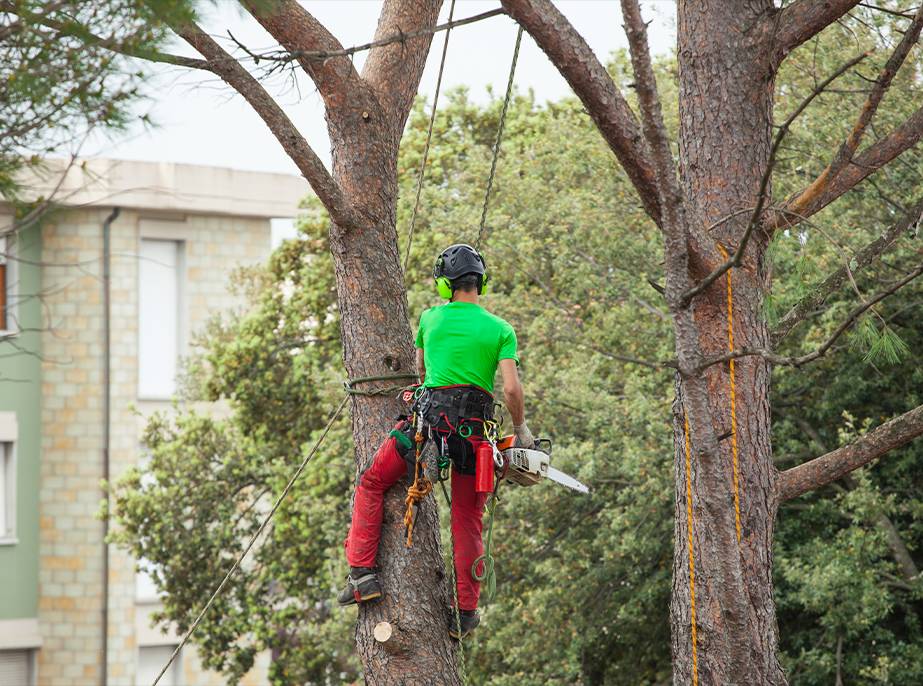
Tree cabling is a common technique arborists use to provide extra support to trees with structural issues. If a tree on your premises has multiple trunks or branches that have grown awkwardly, consult a professional tree care company to assess the severity and recommend effective solutions. When you hire Arbor & Acre to cable your trees, it minimizes the risk of limb or trunk failure, improving health and growth. For those who prefer a more hands-on approach, here’s everything you need to know about the tree cabling to ensure a seamless process.
Before cabling your trees, assess vulnerable areas to determine severity and improve the tree’s structural integrity. Look for signs of weakness such as deep V-shaped branch unions, multiple heavy limbs that grow away from the trunk, or existing cracks in large branches. A certified tree service provider can recommend cabling if it will improve stability. This goes a long way to prevent deterioration, safety hazards, and tree removal emergencies. Since cabling is only beneficial for trees with structural potential; dead or severely diseased trees don’t meet the criteria.
There are several cabling systems in the market, hence the need to consult a professional tree care company for guidance. Certified arborists can either recommend static or dynamic systems, as they are the most common. Static systems use rigid cables to provide immediate support while allowing for little movement, making them ideal for trees with severe splits. Dynamic systems use more flexible materials that allow branches to sway naturally, which is better for trees that need preventative support rather than immediate correction. Tree service professionals in Cordele, GA can recommend the correct system depending on your tree’s specific needs and the stability required.
Once you have chosen a cabling system, plan where to place the cables. Arborists and industry professionals usually install cables about two-thirds of the way up the trunk from the weak branch junction. This offers enough support without restricting natural movement. It’s crucial to follow this guideline for optimal effectiveness, as incorrect placement may reduce stability or result in unplanned tree removal projects.
Cable installation entails drilling holes in each limb at specific points for proper attachment. It is advisable to use a high-quality drill and ensure the holes are clean and the correct size for your equipment. After preparing the holes, thread the cable through the hardware and attach it securely. Avoid over-tightening the cable, allowing the limbs to sway slightly in the wind. Proper installation requires patience and precision to ensure safety and the tree’s well-being.
Cabling is not a onetime fix; regular inspections and maintenance by trained arborists are vital to keep the tree safe. Every two to three years, or after significant storms, check the cable for damage, such as rust or fraying. Also, adjust the tension as the tree grows to prevent the hardware from embedding into the trunk or limbs.
Tree cabling is a valuable technique that can extend a tree’s life and improve its structural integrity. While cabling can seem complex, understanding each step makes it more approachable. Contact us at Arbor & Acre and schedule a consultation with our experts to support your trees and preserve their beauty and functionality for years.
When designing your landscape, it’s not just about patios and decks, but also trees and shrubs. If…
+ Read MoreWhen it comes to tree care, it is essential to have the right tools for the job.…
+ Read MoreAs a homeowner, maintaining a beautiful and healthy yard is commendable and provides numerous benefits. While these…
+ Read More